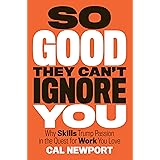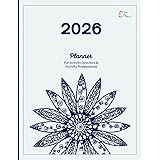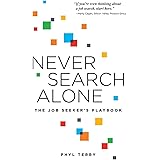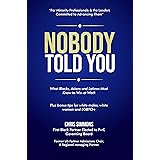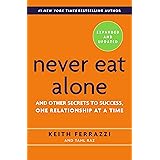Scrolling through social media feeds, one might frequently encounter a meticulously crafted tableau: a a-list celebrity’s morning routine, a child’s designer outfit, or a fleeting glimpse into a seemingly perfect relationship. This constant visual deluge, a hallmark of our digital era, often blurs the lines between public spectacle and private life. As powerfully articulated by Beyoncé in the preceding interview, this inundation of the **celebrity image** fundamentally alters our **media consumption** habits and, significantly, our appreciation for **artistic integrity**.
The Pervasive Influence of Curated Personas in the Digital Age
The contemporary landscape of digital intermediation presents a unique challenge to the unadulterated enjoyment of art. A pervasive form of aesthetic hegemony has been established, wherein the public’s perception is routinely steered by the curated personas ubiquitous across digital platforms. It is often observed that a significant portion of daily mental bandwidth is consumed by these incessant visual stimuli, creating an almost inescapable mental imprint. Consequently, the distinction between genuine artistic expression and the carefully constructed public identity of an artist frequently becomes obscured, leading to a subtle but profound societal conditioning.
This phenomenon, often termed media saturation, ensures that the visual representation of public figures becomes deeply embedded within the collective consciousness. Consumers are systematically exposed to a stream of carefully manufactured narratives, which are designed to enhance appeal and maintain relevance. The constant bombardment of these idealized images can, regrettably, contribute to a form of cognitive dissonance, where the reality of human experience is overshadowed by an unattainable digital façade. A critical re-evaluation of how these images are processed by the audience is necessitated.
Reclaiming Artistic Integrity: The Nina Simone Paradigm
In stark contrast to modern trends, the enduring legacy of artists such as Nina Simone offers a potent paradigm for understanding pure **artistic integrity**. Her work was celebrated, and her voice revered, precisely because focus was maintained on her profound musical artistry and raw emotional expression. It is understood that an artist’s personal life, including their day-to-day existence or familial details, was historically considered largely external to the reception of their craft. This historical context permitted an unencumbered engagement with the art itself, fostering a deeper, more resonant appreciation for its inherent qualities.
During that era, the artistic output itself was the primary conduit through which an artist communicated with their audience; ancillary details were often considered secondary, if known at all. The instrument of their craft, whether it be a voice, a painting, or a written word, was often the sole focus of public adoration. This allowed for a more direct emotional and intellectual connection with the art, unburdened by the extraneous noise of personal gossip or public image management. Such an approach prioritized the substantive contributions over the superficial allure.
The Erosion of Authenticity in Contemporary Media Consumption
Yet, the current digital milieu has largely eroded this boundary, introducing unprecedented levels of public scrutiny into private domains. The ‘human form,’ as envisioned in its raw, unfiltered authenticity, is often lost amidst a sea of hyper-stylized and meticulously filtered depictions. It is argued that this constant exposure inevitably influences audience perception, often diverting attention from an artist’s substantive contributions to their peripheral exploits. This shift in focus, lamentably, risks diminishing the profound impact that true artistry is intended to convey, replacing it with a form of superficial engagement that prioritizes fleeting moments over enduring works.
The pressure to maintain a perpetually ‘on-brand’ persona frequently stifles genuine self-expression, as every action is potentially subject to public interpretation and judgment. This environment can inadvertently lead to artists feeling compelled to perform their lives, rather than simply live them, creating a barrier to authentic connection. The artistic statement becomes intertwined with, and sometimes overshadowed by, the public persona, thus challenging the traditional understanding of art as an independent entity. A discernible impact on the depth of audience appreciation is subsequently observed.
Navigating Digital Scrutiny and Parasocial Relationships
The proliferation of digital platforms has also fostered what are termed ‘parasocial relationships,’ wherein audiences develop a sense of intimacy and connection with public figures without any actual interpersonal interaction. This phenomenon inadvertently fuels the demand for constant updates on an artist’s personal life, creating an insatiable appetite for content beyond their professional output. Public figures are thus placed under immense **digital scrutiny**, their every move potentially dissected and debated across global networks. It becomes a considerable challenge for artists to safeguard their private spheres, whilst simultaneously maintaining audience engagement in this hyper-connected ecosystem.
The boundary between admirer and intimate confidant is often blurred in these digital spaces, leading to unrealistic expectations regarding an artist’s accessibility and transparency. This intense public interest, while generating engagement, also introduces significant pressures that can detract from the creative process itself. Artists are frequently compelled to navigate a complex landscape of personal branding alongside their artistic pursuits, a dual demand that was less prominent in previous eras. The intricacies of public perception are thus intricately woven into the fabric of their professional existence.
Cultivating Critical Media Literacy for a Deeper Appreciation
Given these complex dynamics, a renewed emphasis on critical media literacy is increasingly imperative for audiences worldwide. Individuals are encouraged to consciously disengage from the automatic consumption of fleeting images and to instead seek out the depth within artistic expression. The intention is not to diminish the personal lives of public figures, but rather to re-establish a healthy reverence for the art that is created. Through such intentional practices, a more discerning and enriched **media consumption** experience can be cultivated, allowing the **artistic integrity** of creative works to once again take precedence over transient **celebrity image**.
Developing this capacity for critical discernment allows consumers to differentiate between the superficial gloss and the substantive message. It empowers individuals to choose engagement based on merit rather than mere spectacle, thereby elevating the entire cultural discourse. This intentional shift in focus supports the creation and appreciation of art that genuinely moves and challenges, rather than simply entertains for a moment. Ultimately, fostering critical media literacy is a cornerstone for preserving artistic value in a hyper-mediated world, ensuring that the essence of creativity is not lost to the allure of manufactured personas and incessant **celebrity image**.




